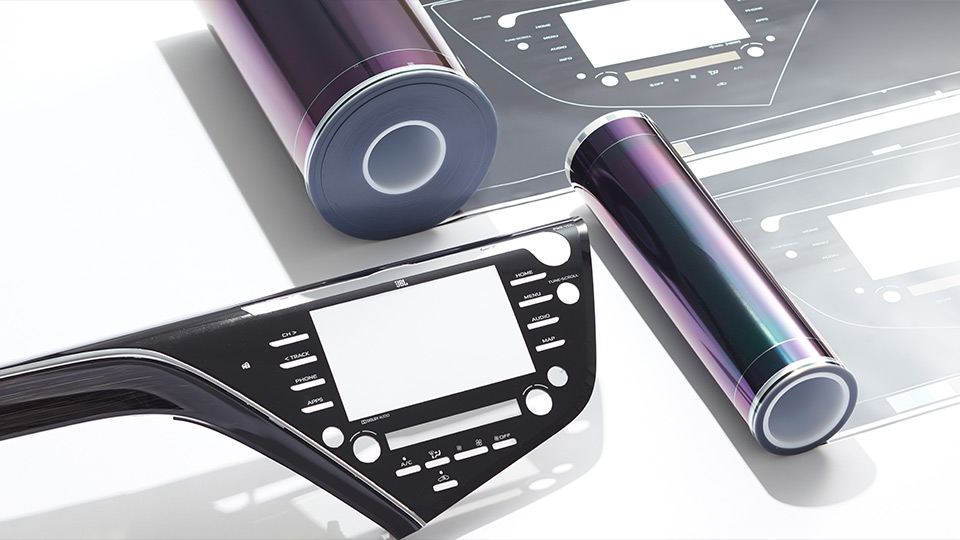Achieving Superior Finishes with In-Mold Decorations in Manufacturing
Achieving Superior Finishes with In-Mold Decorations in Manufacturing
Blog Article
Mastering In-Mold Decorations: Approaches, Patterns, and Best Practices for Ideal Results
In the world of manufacturing, the art of in-mold decorations stands as a critical element of item style and production. In-Mold Decorations. By delving into the approaches, fads, and ideal techniques that underpin successful in-mold decoration procedures, companies can unlock a realm of possibilities that not only elevate the aesthetic allure of their products yet additionally streamline manufacturing performance and strengthen customer involvement.
Product Choice
Material choice is a crucial aspect of understanding in-mold designs, as it directly influences the top quality and sturdiness of the final item. When choosing products for in-mold decorations, it is crucial to think about elements such as compatibility with the molding procedure, the desired aesthetic end result, and the environmental conditions the item will encounter.
In addition, materials with high heat resistance are preferred for in-mold decors, especially for items that will be exposed to elevated temperatures during their lifecycle. By very carefully choosing the proper material for in-mold designs, suppliers can boost the total top quality and resilience of their products, meeting the expectations of both end-users and customers - In-Mold Decorations.
Layout Technology
An important element in advancing the field of in-mold decorations is the continual expedition and execution of layout advancement methods. Style development plays a vital function in improving the aesthetic appeal, functionality, and overall quality of items produced utilizing in-mold design processes. By incorporating cutting-edge layout aspects, producers can differentiate their products in the marketplace, bring in consumers, and remain in advance of competitors.
Among the crucial aspects of layout advancement in in-mold designs is the assimilation of complex patterns, textures, and graphics that were formerly testing to accomplish with traditional decor techniques. Advanced innovations such as 3D printing and electronic layout devices allow designers to develop complicated and detailed styles that can be seamlessly transferred onto shaped parts. In addition, making use of vivid colors, metal finishes, and special results like gloss or matte textures can better elevate the aesthetic allure of in-mold decorated items.
In addition, style technology extends beyond aesthetic appeals to incorporate functional enhancements such as ergonomic forms, incorporated functions, and personalized elements that cater to certain user demands. By welcoming design advancement, suppliers can unlock new possibilities for personalization, imagination, and item differentiation in the affordable landscape of in-mold decors.
Production Effectiveness
Reliable production processes are necessary for converting the cutting-edge designs developed in the field of in-mold decorations into top notch completed items that satisfy market needs and customer expectations. In the world of in-mold designs, manufacturing effectiveness includes different vital facets that add to the total success of the production process. One important aspect is the optimization of mold design and tooling to ensure smooth and precise decor transfer onto the end product. By fine-tuning mold setups and purchasing high-quality tooling products, producers can boost performance and uniformity in manufacturing.
Furthermore, implementing automation and robotics in the assembly line can substantially enhance efficiency by enhancing repeated jobs and minimizing the margin of error. Automation not just accelerates the manufacturing procedure but additionally enhances accuracy and repeatability, resulting in an extra high-quality and consistent final result. In addition, embracing lean manufacturing concepts, such as just-in-time inventory monitoring and waste reduction approaches, can even more enhance manufacturing efficiency by decreasing downtime and maximizing resource use. Generally, an alternative approach to manufacturing effectiveness is extremely important in making best use of the capacity of in-mold design strategies and attaining ideal cause the affordable market landscape.
Quality Control Measures
What are the essential strategies for making certain strict top Full Report quality control procedures in the realm of in-mold designs? Quality control measures are extremely important in in-mold design processes to make sure the production of perfect and top quality completed items.
Using advanced innovations such as automated examination systems can additionally enhance the quality assurance procedure by offering trusted and accurate data for evaluation. These systems can spot flaws that might be missed by hands-on examinations, thus enhancing total product high quality and uniformity.

Regular training and advancement programs for workers associated with the in-mold decoration process can likewise add to maintaining high-grade requirements. By informing personnel on finest techniques, top quality assumptions, and the value of interest to information, companies can foster a culture of high quality consciousness throughout the company.
Customer Allure
To boost the bankability of in-mold decoration items, providing and comprehending to consumer choices play an important role in determining their allure and success. Providing customization alternatives such as tailored layouts, color variants, and textural aspects can considerably enhance the charm of in-mold decoration items.

Final Thought
In-mold decorations provide a reliable and versatile way to improve item aesthetic appeals. By very carefully picking products, accepting ingenious layouts, maximizing manufacturing procedures, applying quality control steps, and prioritizing consumer appeal, producers can accomplish ideal results. It is vital for firms to consistently adjust and improve their strategies to stay competitive in the market. In-Mold Decorations. Mastering in-mold decorations requires a holistic approach that considers all elements of the production process to guarantee success.
In the Web Site realm of manufacturing, the art of in-mold decors stands as an essential element of product layout and manufacturing. Design innovation plays a critical duty in enhancing the visual charm, functionality, and total high quality of items made using in-mold decoration processes.One of the crucial facets of layout advancement in in-mold decorations is the combination of elaborate patterns, appearances, and graphics that were previously challenging to accomplish with typical decor techniques.Efficient manufacturing processes are crucial for equating the cutting-edge designs established in the field of in-mold designs right into top quality ended up products that satisfy market needs and consumer expectations. Using personalization alternatives such as customized styles, shade variations, and textural aspects can significantly enhance the charm of in-mold decor products.
Report this page